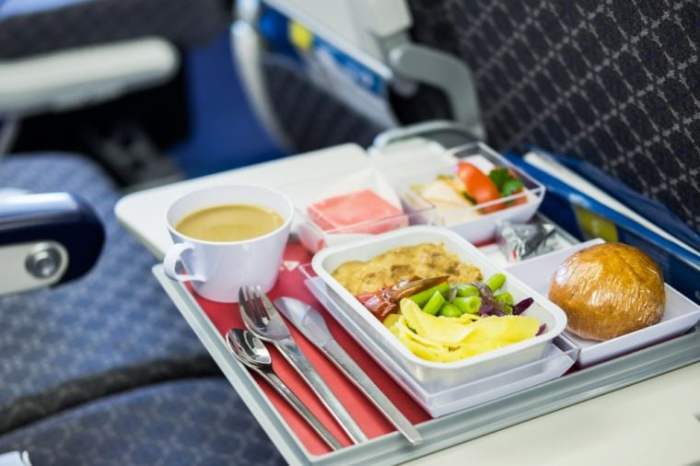
How to bring food on budget airlines is a question many budget travelers ask. Navigating airline regulations regarding food, especially liquids and restrictions, can be tricky. This guide provides practical tips and strategies for packing your own meals, finding affordable options at airports, and understanding the pros and cons of purchasing food onboard. We’ll cover everything from permitted items and packing techniques to budget-friendly airport choices and cost comparisons, ensuring you enjoy a delicious and affordable in-flight experience.
We’ll delve into specific examples of permitted foods, effective packing strategies to maintain freshness, and explore cost-effective options at airports and onboard. The guide also addresses dietary restrictions and offers tips for saving money and time. Whether you prefer to pack your own snacks or utilize airport resources, this comprehensive guide provides the knowledge you need to make informed decisions about your inflight meals.
Allowed Food Items on Budget Airlines: How To Bring Food On Budget Airlines

Bringing your own food on budget airlines can significantly reduce travel costs. However, understanding what’s permitted is crucial to avoid issues at security and onboard. This section Artikels the generally accepted guidelines and provides examples to help you pack efficiently and legally.
Permitted Food Items
Generally, solid food items are allowed on budget airlines. This includes things like sandwiches, fruits, vegetables, crackers, and most packaged snacks. However, specific regulations may vary slightly between airlines and countries. It’s always advisable to check the specific airline’s website before your flight for the most up-to-date information. Remember that even permitted items might be subject to limitations based on volume or overall carry-on allowance.
Regulations Regarding Liquids and Gels
Liquids, gels, and aerosols are subject to stricter regulations. These items must typically be contained in containers of 100ml or less and fit into a single, transparent, resealable plastic bag (usually with a capacity of one litre). This is consistent with standard airport security regulations worldwide. Exceptions might be made for baby food or essential medication, but these usually require documentation or prior notification to the airline.
Examples of items subject to these rules include bottled water, yogurt, sauces, and hand sanitizer.
Examples of Travel-Friendly Snacks
Several snacks are particularly well-suited for air travel due to their durability and ease of packing. For example, energy bars are non-perishable and provide sustained energy. Dried fruits, such as raisins or cranberries, are lightweight and convenient. Nuts, while potentially causing allergic reactions for some, are a popular choice for their high nutritional value and portability. Crackers or pretzels offer a salty option, and individually wrapped items avoid mess and maintain freshness.
Consider packing snacks in reusable containers to reduce waste and keep things organized.
Comparison of Airline Food Policies
The following table provides a general comparison of permitted food items across several major budget airlines. Note that this information is for illustrative purposes and may not be completely exhaustive or reflect the most current policies. Always check the specific airline’s website for the most accurate and updated details before your journey.
| Airline | Solid Foods | Liquids/Gels (under 100ml) | Other Restrictions |
|---|---|---|---|
| Airline A | Generally permitted | Standard TSA regulations apply | No specific restrictions noted |
| Airline B | Generally permitted | Standard TSA regulations apply | Check baggage allowance restrictions |
| Airline C | Generally permitted | Standard TSA regulations apply | May have restrictions on certain items (e.g., strong-smelling foods) |
| Airline D | Generally permitted | Standard TSA regulations apply | No specific restrictions noted |
Packing Food for Budget Flights

Packing your own food for budget flights can significantly reduce costs and ensure you have nutritious meals during your journey. However, careful planning and packing techniques are crucial to maintain food freshness, avoid spills, and comply with airline regulations. This section Artikels effective strategies for packing food efficiently and safely for your budget flight.Effective strategies for maintaining food freshness and preventing spills involve careful selection of food items and appropriate packaging.
Choosing non-perishable items is key, minimizing the risk of spoilage. Proper containment is equally important to prevent messy leaks.
Food Selection and Packaging for Air Travel
Prioritize non-perishable items that are lightweight and easy to pack. Consider foods like dried fruits, nuts, energy bars, crackers, and pre-portioned bags of trail mix. Avoid liquids or anything that could easily leak or create a mess. For items requiring refrigeration, consider using insulated bags with ice packs (ensure they are securely sealed to prevent leakage). Remember to check airline regulations regarding liquids; quantities are often restricted.
For example, many airlines allow small quantities of baby food or medication in liquid form, but these must be declared and may need to be presented separately at security.
Minimizing Weight and Maximizing Space
To minimize weight and maximize space, opt for lightweight, reusable containers. Avoid bulky packaging. Pre-portioning food into smaller containers can save space and reduce overall weight. For instance, instead of bringing a whole bag of chips, pre-portion into individual zip-top bags. This strategy allows you to easily manage portions and prevents the entire bag from becoming crushed or broken.
Suitable Reusable Containers
Several reusable containers are well-suited for air travel. Consider sturdy, leak-proof containers made of food-grade silicone or BPA-free plastic. Zip-top bags are also excellent for smaller items. Vacuum-sealed bags can be useful for preserving the freshness of certain foods, though they may add a bit of extra weight. For example, a set of nesting silicone containers allows you to pack a variety of foods efficiently, saving space and weight.
These can be easily cleaned and reused on subsequent trips.
Packing a Nutritious and Budget-Friendly In-Flight Meal, How to bring food on budget airlines
A simple step-by-step guide to packing a nutritious and budget-friendly meal for your flight could be as follows:
1. Plan your menu
Select non-perishable, lightweight foods that provide a balance of carbohydrates, proteins, and healthy fats. Examples include whole-grain crackers, a protein bar, nuts, and dried fruit.
2. Portion your food
Pre-portion your selected foods into individual reusable containers or zip-top bags. This helps control portion sizes and prevents spills.
3. Pack your meal
Place your pre-portioned food items into a reusable bag or container. Include any necessary utensils (e.g., a small fork or spoon) and napkins.
4. Add any necessary extras
If you need to pack any liquids, ensure they comply with airline regulations. Pack these separately from your solid foods.
5. Store securely
Place your packed meal in your carry-on luggage in a readily accessible location.
Successfully navigating the world of budget airline food doesn’t have to be a stressful experience. By understanding the regulations, employing smart packing strategies, and exploring both onboard and airport options, you can enjoy a satisfying and cost-effective meal during your journey. Remember to plan ahead, pack efficiently, and weigh the costs and benefits of each approach to ensure a smooth and delicious travel experience.
Bon appétit!
Expert Answers
Can I bring a whole watermelon on a budget airline?
While not explicitly forbidden, a whole watermelon is likely too large and heavy for carry-on luggage and could be rejected due to size restrictions. Consider bringing smaller, pre-cut fruit.
What if my food spills during the flight?
Pack your food securely in leakproof containers. Bring extra napkins or wipes to clean up any potential spills. It’s also wise to pack a plastic bag to contain any mess.
Are there any restrictions on bringing baby food?
Generally, baby food is permitted, but it’s best to check the specific airline’s regulations. Liquids and gels are subject to the 3-1-1 rule (3.4-ounce containers in a quart-sized bag).
Can I bring alcohol onboard a budget airline?
This depends on the specific airline and your destination. Alcohol purchased in duty-free shops is usually permitted, but bringing your own alcohol may be restricted. Check with your airline before your flight.





